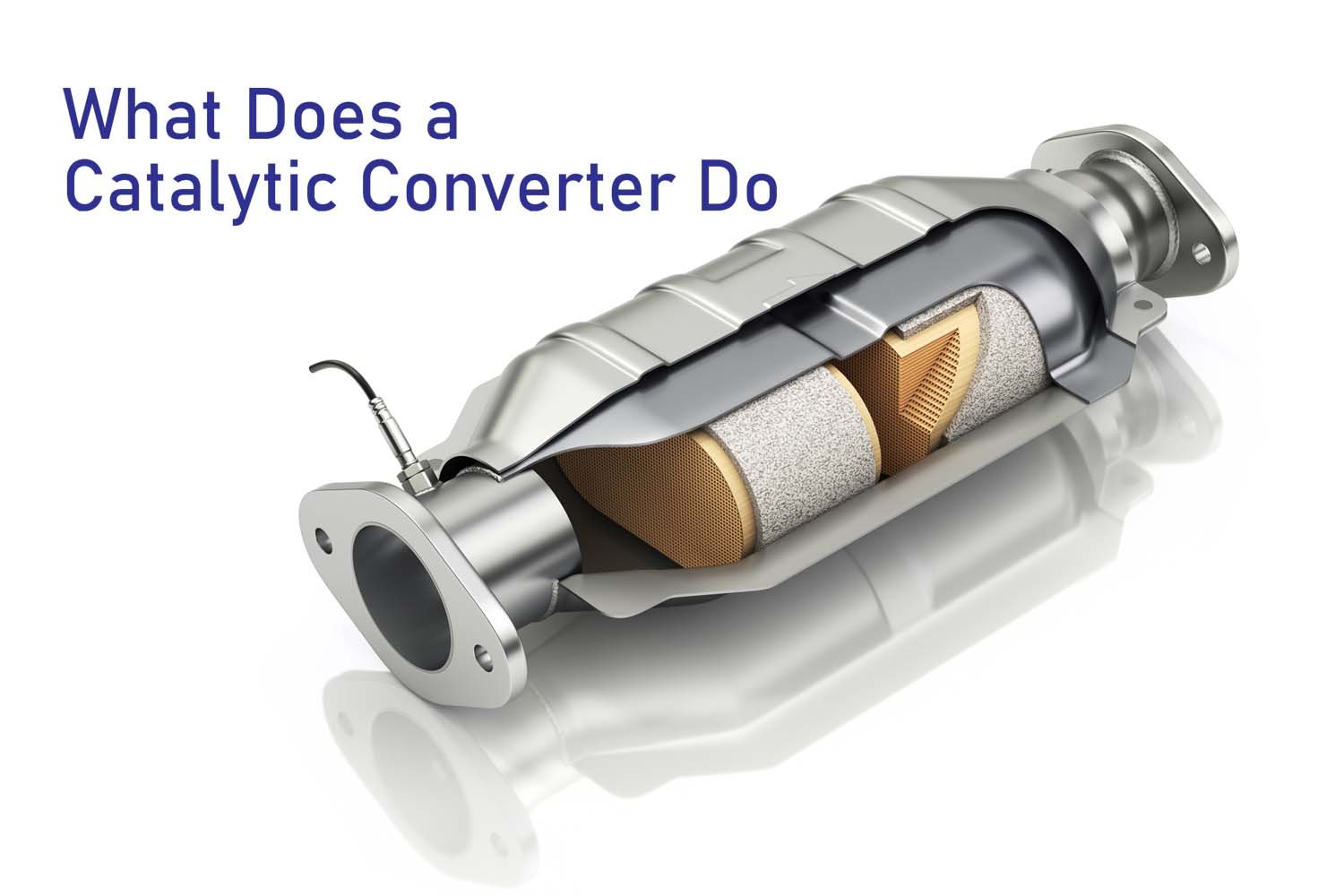What Does a Catalytic Converter Do? Sometimes the things we cannot see hurt us the most, right? Well, I’m not talking about the causes of a broken heart. Here we are talking about toxic gases from motor-vehicle emissions, such as sulfur dioxide, benzene, and particular matter, which can damage your lungs and cause asthma and other serious illnesses.
To save us from this danger, a catalytic converter arrived like a guardian angel. It’s a large metal box attached to the underside of the vehicle. This device can reduce tailpipe emissions by near about 50 percent.
In this article, we will have a broad discussion about a catalytic converter. Such as, what does a catalytic converter does, different types of catalytic converters, how its constructed, and so on. So, let’s get started.
What Is a Catalytic Converter?

The catalytic converter works as an exhaust emission control device. The main job of this device is to reduce pollutants in the exhaust gas, toxic gases from the internal combustion engine.
It’s usually found in an internal combustion engine fueled by diesel or gasoline. The catalytic converter first arrived in the United States automobile market.
Who Invented the Catalytic Converter?
The concept of the catalytic converter was first introduced in France at the end of the 19th century. After few decades, Mr. Eugene Houdry, a French mechanical engineer, patented a catalytic converter.
He moved to the USA in 1930. After seeing the results of early studies of smog in Los Angeles, Mr.Houdry became very concerned about the danger of automobile exhaust and smokestack exhaust in air pollution and founded the company named, Oxy-Catalyst. He started research on developing catalytic converter for cars that runs by gasoline engines.
The catalytic converter has also been developed by Antonio Eleazar, John J. Mooney, Card D. Keith, and Phillip Messin, leading the way to create the first fully functioning catalytic converter in 1973.
What Is Inside a Catalytic Converter?
Let’s have a look at the inside of a catalytic converter. This will help us to understand better how it functions:
- The Catalyst Support
- The Wash coat
- Ceria
- The Catalyst
The Catalyst Support
When it comes to automotive catalytic converters, the core of it is made of a ceramic monolith and, it’s shaped in a honeycomb structure. Kanthal (FeCrAl) made Metallic foil monoliths are used where high heat resistance is needed. The substrate was constructed so that it can create a large surface area.
The Wash coat

The wash coat works as a vessel for the catalyst material and plays the main role in distributing the material over a wide surface area. All the catalyst materials get suspended in the wash coat before getting to the core.
Ceria
It needs some oxygen storage promoters. And these oxides play the most crucial role here. The Catalyst This is the most expensive part of the catalytic converter. The main element is usually from the platinum group. You might know that platinum is one of the most active catalysts. However, it’s not good for all elements, as it creates unwanted additional reactions sometimes and also costs a lot.
Two other precious metals, rhodium is palladium, are also used. Rhodium works as a reduction catalyst and, palladium does the task of oxidation. Platinum plays the role of both reduction and oxidation. You will also find iron, cerium, nickel, and manganese but, they have limitations.
In the European Union, nickel is not authorized to use as it reacts with carbon monoxide into toxic nickel tetracarbonyl. Copper is allowed to use almost everywhere, excluding Japan.
Types of Catalytic Converters

- A catalyst converter has two primary catalysts one is reduction and oxidation. These are used within the exhaust system to take care of certain gases. Whether there will be a reduction catalyst or not depends on the vehicle’s year and the type of catalytic converter. Here are the two main catalytic converters:
- Two-way Catalytic Converters
- Three-way Catalytic Converters
Two-way Catalytic Converters
The two-way converter existed in the vehicles of USA until 1981. They have no other catalyst but, an oxidation catalyst. It plays the role of carbon monoxide to carbon dioxide. The unburned hydrocarbons transform into carbon dioxide and water.
Three-way Catalytic Converters
The three-way converter has the extra advantage of controlling nitrogen dioxide (NO2) and nitric oxide (NO). And these are the forerunner of smog and acid rain. It has been used in vehicle emission controlling systems in Canada and the USA since 1981. It works almost like a two-way converter with the inclusion of a reduction catalyst.
The diesel engine uses a two-way catalyst system. Those converters were also exclusively designed to be compatible with diesel exhausts.
How Effective Are Catalytic Converters?

We can get the efficiency rating of the catalytic converter by using some can tools together with the switching between rich and lean. We can also use lab scope to monitor the switching. Most of the converters will give you around 90% efficiency when they are new and gradually reduce to 95% efficiency after riding about 6,000 km.
The converter will keep giving you a decent performance in cleaning up the exhaust as long as the efficiency doesn’t come down more than a few percentage points. But when the efficiency climbs down below 92%, it will light up the MIL lamp.
Only a three percent drop in converter efficiency can lead the emission to cross federal limits by 150%. The LEV standard will approve only 0.225 grams per mile of hydrocarbons. If you want to keep your catalytic converter running well for a long time, you must do regular maintenance and, cleaning is one of the most important tasks to do. Here’s how to use a catalytic converter cleaner. How Effective Are Catalytic Converters?
FAQs
Yes, the catalytic converter can work for diesel engines but, it’s not like how they work in gasoline engines. As they do not have reduction catalysts, diesel engines generate a lot higher tailpipe emissions of nitrogen oxide than gasoline engines.
Come on! You would not want to drive with a bad catalytic converter. First and foremost, it’s completely illegal to drive without a catalytic converter or with a bad one in states like California. If you get caught, you will have to pay thousands of dollars in fines. Besides that, it would be extremely harmful to the environment. Also, you are harming the health of the people in that area.
If your catalytic converter goes bad, you may notice issues engine light automatically turning on and, if it’s not about an engine misfire or emission-related problem, then most probably it’s the catalytic converter. Another issue may arise, you will smell rotten eggs.
You may notice many problems such as exhaust smoke coming out of the vehicle’s tailpipe, and the vehicle’s gas mileage will reduce. The vehicle will start to misfire, and hearing rattling sound comes underneath your vehicle.
Final Verdict
As you can see, a catalytic converter is one of the most important parts of a vehicle. So, if your one is not functioning, well, then we would highly suggest you change it as soon as possible.
You are not only reducing the performance of your vehicle but, also you are harming nature and people’s health by releasing toxic gases. It’s morally wrong also against the law.
So, if you care for nature and yourself, you must change it if needed. We hope after reading our article, now you understand what does a catalytic converter does.
